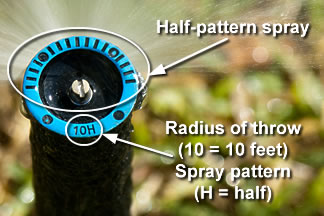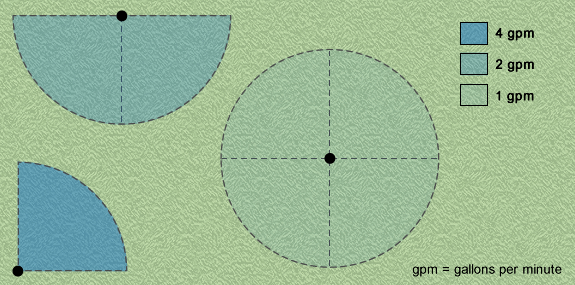Matched precipitation
- Home
- /
- Technical Manual
- /
- Irrigation system criteria
- /
- Distribution (application) uniformity
- /
- Matched precipitation
Background
The precipitation rate, also known as application rate, is the average rate (in inches per hour) of rainfall or irrigation system water application.
The term matched precipitation means that all the sprinklers in a particular zone apply about the same amount of water on a given area. Precipitation rates are found in manufacturers’ catalogs and vary between sprinkler/emitter types and their range of throw.
Requirements and certification
Precipitation rates for all sprinklers within a zone shall be matched.
| Silver | Gold | Commercial/Institutional |
|---|---|---|
| Required | Required | Required |
Mismatched precipitation rates typically do not occur in spray head zones because spray heads are manufactured to have matched precipitation.
Rotor heads do not already have matched precipitation, requiring further effort by the designer/installer. Additionally, rotor heads have lower precipitation rates than spray heads. Therefore, this criterion requires that:
- All rotor zones must have matched precipitation.
- Rotors shall not be installed in the same zone as spray heads.
Two different strategies can be used to achieve matched precipitation within a rotor zone.
Zoning similar throw patterns together: Matched precipitation is best when sprinklers with similar throw patterns are installed in the same zone (e.g., quarter-spray heads with only quarter-spray heads).
Even spacing and correct nozzle size: While not as exact as installing heads with similar throw patterns together, matched precipitation can be achieved by spacing sprinklers evenly and installing appropriate nozzles. This approach is dependent on a sprinkler’s flow and area of coverage. The designer/installer must:


Rotor tool
- Choose nozzles according to flow rate (gallons per minute).
- Install all the heads within a zone the same distance apart.
- For sprinkler heads with the same throw radius (e.g., 20 ft), an increase in the throw pattern (e.g., 90 degrees to 180 degrees) should result in a proportional increase the nozzle flow rate (e.g., 1 gpm to 2 gpm).
- If a 1-gpm nozzle is used to irrigate a quarter circle, a 2-gpm nozzle must be used to irrigate a half circle and a 4-gpm nozzle must be used to irrigate a full circle.
Program tip
Mismatched precipitation rates often occur when the same sized rotor nozzle is used in all sprinklers throughout the entire zone. To avoid this, a contractor should change nozzles in order to achieve matched precipitation.

Microirrigation emitters are available in a wide variety of precipitation rates that are designed to meet specific plant watering requirements. These precipitation rates are significantly lower than spray and rotor nozzles, but a single microirrigation zone can have many more emitters. Precipitation rate variation in a microirrigation zone is acceptable if the zone is designed to meet each plant’s watering requirement within a similar amount of time.
